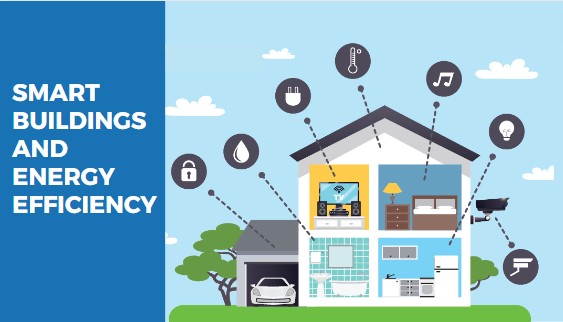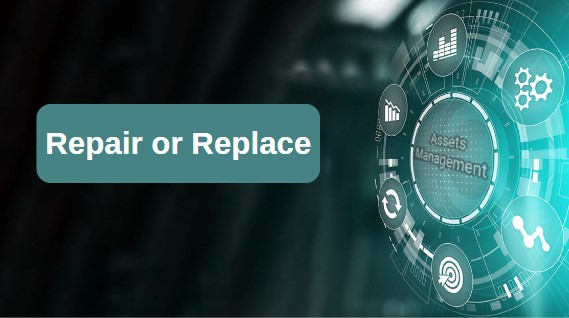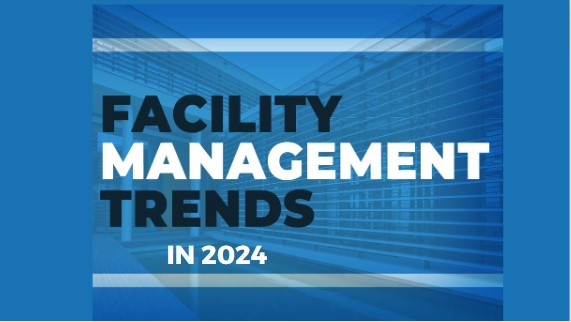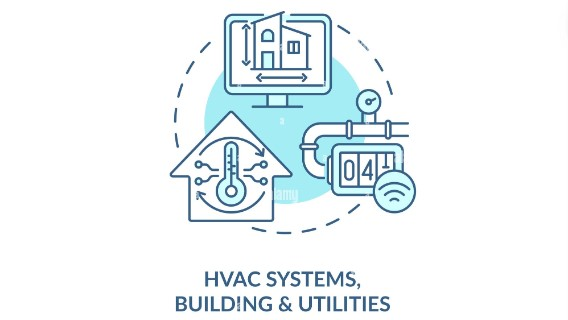
Do You Need a Building Maintenance System in 2024?
Pratik Lohiya |
22 Feb 2024 |
07:33 AM
- Understanding the Importance of Building Maintenance Systems
- Overview of Facility Management Trends in 2024
- Trends Defining Facilities Management in 2024
- Upgrading Facilities for the Future
- Role of Smart Buildings and Energy Efficiency
- Conclusion

Repair or Replace in Asset Management
Madhurima Sanyal 29 Jan 2024 | 17:48 PMExplore the intricate landscape of asset management as this blog guides you through the crucial decision-making process of repairing or replacing equipment. Delve into topics like CMMS, calculating costs, asset valuation, and practical insights to mak...
In today's dynamic business landscape, the efficacy of building maintenance systems stands as a crucial determinant of operational success. Such systems, often overseen by facility managers, ensure the seamless functioning of complex building infrastructures. As we delve into 2024, a pivotal year marked by technological advancements and evolving industry standards, the significance of facility management reaches new heights.
In this blog, we embark on an exploration of the evolving landscape, shedding light on the importance of building maintenance systems and discerning the prevailing facility management trends shaping the year ahead.
Understanding the Importance of Building Maintenance Systems
Building maintenance systems represent the backbone of efficient facilities management, encompassing a spectrum of preventive, predictive, and corrective measures. These systems, under the stewardship of facility managers, ensure the optimal functionality of diverse building components, from HVAC systems to security infrastructure.
By leveraging predictive maintenance techniques and field service management software, organizations can proactively address potential issues, minimizing downtime and optimizing operational efficiency.
Overview of Facility Management Trends in 2024

The year 2024 heralds a paradigm shift in the realm of facility management, propelled by emerging trends and technological innovations. From an increased focus on predictive maintenance to the adoption of advanced field service management software, organizations are poised to optimize their facility management strategies. Moreover, the industry is witnessing a growing emphasis on operational efficiency and sustainability, driving the integration of complex building systems and the implementation of preventive maintenance measures.
Trends Defining Facilities Management in 2024
Predictions for the Future of Facilities Management
Looking ahead, the future of facilities management appears dynamic and promising, with several key predictions shaping the landscape. Facility managers are expected to play increasingly strategic roles, leveraging data analytics and artificial intelligence to drive informed decision-making and enhance operational efficiency. There's a growing emphasis on proactive maintenance approaches, blending preventive and predictive techniques to minimize downtime and maximize asset performance.
Impact of Generative AI on Building Operations
Generative AI stands poised to revolutionize building operations in 2024, offering unprecedented insights and optimizations. By analyzing vast datasets and simulating various scenarios, generative AI enables facility managers to optimize space allocation, enhance energy efficiency, and streamline maintenance processes. Moreover, AI-driven predictive analytics empower organizations to anticipate maintenance needs and address issues promptly, reducing downtime and enhancing operational continuity.
Compliance Periods and Building Performance Measurement
In 2024, compliance periods take on heightened significance in the realm of building performance measurement. With regulatory requirements becoming more stringent, organizations are compelled to adopt advanced monitoring and reporting systems to ensure compliance with energy efficiency standards and environmental regulations.
Facility managers play a pivotal role in implementing robust performance measurement strategies, leveraging data analytics and real-time monitoring to track energy consumption, assess environmental impact, and identify areas for improvement.
Integration of Advanced Building Management Systems

The integration of advanced building management systems leverage cutting-edge technologies such as IoT sensors, cloud computing, and machine learning to monitor and control various building functions in real-time. From HVAC systems to security infrastructure, advanced building management systems provide facility managers with valuable insights into building performance, energy usage, and occupant comfort.
By harnessing the power of data and automation, organizations can streamline operations, reduce costs, and create smarter, more responsive built environments that meet the evolving needs of occupants and stakeholders.
Evolving Roles and Skills in Facility Management
In the ever evolving business landscape today, facility management professionals are tasked with diverse responsibilities beyond traditional maintenance tasks. Their roles encompass strategic planning, technology adoption, and fostering sustainability. With the advent of preventive and predictive maintenance techniques, facility managers play a pivotal role in optimizing building performance and ensuring operational continuity.
Growing Importance of Soft Skills and Data Security
Soft skills such as communication and problem-solving are increasingly vital for facility managers, enabling effective collaboration with stakeholders and addressing tenant needs. Moreover, as facilities become more data-driven, ensuring robust data security measures is paramount. Facility managers must possess the skills to safeguard sensitive information and mitigate cybersecurity risks.
Expansion of Facility Managers' Planning and Technology Roles
Facility managers are expanding their purview beyond day-to-day operations to encompass strategic planning and technology integration. By leveraging advanced building management systems and predictive analytics, they gain valuable insights into building performance and maintenance needs, driving informed decision-making and optimizing resource allocation.
Collaboration between Building Operators and Tenants
Effective collaboration between building operators and tenants is essential for enhancing tenant satisfaction and optimizing building operations. By fostering open communication and addressing tenant concerns proactively, facility managers can create a conducive environment that meets the needs and expectations of occupants. This collaboration fosters a sense of partnership and mutual respect, contributing to overall satisfaction and well-being.
Technology and Systems for Efficient Building Operations
In facility management industry, leveraging advanced technologies is imperative for optimizing building operations. From IoT sensors to cloud-based management systems, these technologies provide real-time insights into building performance, enabling proactive maintenance and resource optimization. By integrating these systems into their operations, facility managers can streamline processes, enhance efficiency, and deliver superior service to occupants.
Sensor Technology for Monitoring Building Health and Safety
Sensor technology plays a crucial role in monitoring the health and safety of buildings. By detecting environmental changes, such as temperature fluctuations or air quality issues, sensors enable facility managers to identify potential risks and address them promptly. Moreover, sensor data can be used to optimize energy usage, enhance occupant comfort, and ensure compliance with regulatory standards, contributing to a safer and more sustainable built environment.
Wireless Connection, Monitoring, and Automation Systems for Hybrid Work
As the workforce becomes increasingly mobile, facility managers are embracing wireless connection, monitoring, and automation systems to support hybrid work environments. These systems enable remote monitoring of building systems and operations, allowing facility managers to respond to issues quickly and efficiently. By automating routine tasks and optimizing resource usage, these systems enhance productivity, reduce costs, and support the evolving needs of remote and on-site workers.
Strategies to Reduce Unplanned Downtime with Technology
Unplanned downtime can have a significant impact on building operations, leading to lost productivity and revenue. To mitigate this risk, facility managers are implementing strategies to reduce unplanned downtime with technology.
By leveraging preventive maintenance techniques and real-time monitoring systems, they can anticipate potential issues and take proactive measures to prevent equipment failures and disruptions. Additionally, remote monitoring and automation systems enable facility managers to address issues promptly, minimizing downtime and ensuring business continuity.
Upgrading Facilities for the Future
Importance of Modernization in Factories and Facilities
Modernization is essential for factories and facilities to remain efficient and relevant in today's market. By upgrading equipment and systems, property owners can optimize asset management and streamline operations. Additionally, embracing renewable energy sources and energy management practices not only reduces operational costs but also aligns with sustainability goals, making modernization a win-win investment.
Embracing Artificial Intelligence and IoT for Facility Management industry
Artificial intelligence (AI) and the Internet of Things (IoT) are revolutionizing the facility management industry. By harnessing AI-driven analytics and IoT sensors, maintenance teams can gain valuable insights into building performance and anticipate maintenance needs. This proactive approach not only enhances asset management but also improves cost effectiveness by reducing downtime and optimizing resource allocation.
Role of Smart Buildings and Energy Efficiency
Smart buildings play a pivotal role in enhancing energy efficiency and sustainability. By leveraging advanced technologies such as IoT sensors and automated systems, property owners can optimize energy management and reduce operational costs. Additionally, smart buildings provide valuable data insights that enable maintenance teams to perform routine maintenance more effectively, ensuring optimal asset management and streamlined operations.
Ensuring Security and Sustainability
Security and sustainability are paramount considerations for property owners in modern facility management. Implementing robust building maintenance and routine maintenance practices not only enhances asset management but also ensures the safety and security of occupants. Moreover, integrating renewable energy sources and energy management systems promotes sustainability while reducing operational costs. By prioritizing these aspects, real estate owners can create facilities that are both secure and environmentally friendly, contributing to long-term success.
Adopting Sustainable Practices for Eco-Friendly Facilities
By investing in renewable energy sources and energy management strategies, they can reduce their environmental footprint while enhancing cost effectiveness. Implementing green building maintenance and routine maintenance practices further promotes sustainability and ensures optimal asset management.
Leveraging Data Analytics for Streamlining Operations

By harnessing data insights from building maintenance and routine maintenance activities, maintenance teams can identify trends, predict maintenance needs, and optimize asset management strategies. Additionally, data analytics enables real estate owners to make informed decisions about energy management and sustainability initiatives, maximizing cost effectiveness and operational efficiency.
Conclusion
Effective facility management requires a holistic approach that prioritizes building maintenance, routine maintenance, asset management, energy management, and sustainability. By implementing sustainable practices and leveraging data analytics, real estate owners can optimize operations, reduce costs, and enhance the overall efficiency and sustainability of their facilities.
By prioritizing these aspects, real estate owners can create facilities that not only meet the needs of occupants but also contribute to a greener, more sustainable future.